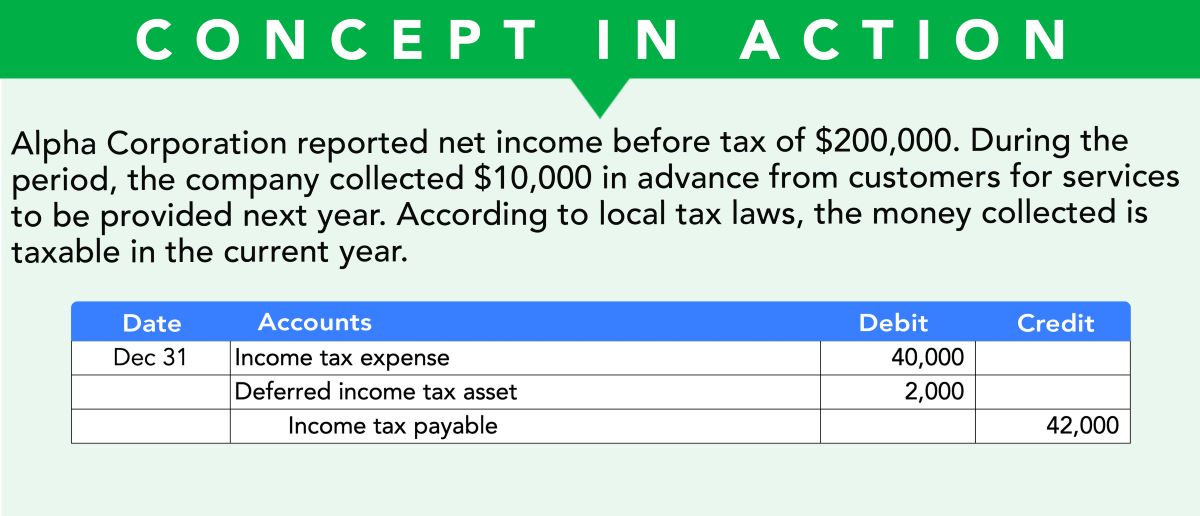

Finance
What Is A Tax-Deferred Investment?
Published: October 19, 2023
Discover the benefits of tax-deferred investments and how they can play a vital role in your financial strategy. Explore different finance options to maximize your savings and minimize your tax burden.
(Many of the links in this article redirect to a specific reviewed product. Your purchase of these products through affiliate links helps to generate commission for LiveWell, at no extra cost. Learn more)
Table of Contents
Introduction
When it comes to managing your finances, it’s crucial to explore various investment options that offer tax advantages. One such investment strategy that can help you minimize your tax liability is a tax-deferred investment. Understanding what a tax-deferred investment is and how it can benefit you is essential for making sound financial decisions.
A tax-deferred investment is a financial vehicle that allows you to postpone paying taxes on the income you earn from your investments. Instead of paying taxes on your investment gains immediately, the taxes are deferred until you withdraw the funds. This deferred tax status allows your investments to grow faster due to the power of compounding.
There are different types of tax-advantaged accounts and investment vehicles that offer tax deferral benefits, such as Individual Retirement Accounts (IRAs), 401(k) plans, annuities, and certain types of bonds and mutual funds. These investments provide individuals and businesses with opportunities to save for retirement or other long-term financial goals while taking advantage of potential tax savings.
The primary benefit of a tax-deferred investment is the ability to delay paying taxes on your investment gains, which can help you accumulate more wealth over time. By reinvesting the money that would have gone toward taxes, your investment returns can compound on a tax-free basis until you decide to withdraw the funds.
One of the advantages of investing in tax-deferred accounts is that they often come with tax deductions or credits. For example, contributions to traditional IRAs or 401(k) plans may be tax-deductible, reducing your taxable income in the current year. This can result in a lower tax bill now while still allowing the investment earnings to grow tax-deferred.
Another benefit is that tax-deferred investments provide flexibility in terms of when you pay taxes. By deferring taxes until retirement or a later date, you can potentially lower your overall tax rate. This is particularly advantageous if you expect to be in a lower tax bracket when you withdraw the funds.
Furthermore, tax-deferred investments can help with estate planning. In certain cases, beneficiaries may inherit the investments with a stepped-up basis, potentially reducing the tax burden on the accumulated gains.
As with any investment strategy, there are risks and limitations associated with tax-deferred investments. It’s important to consider these factors and evaluate your personal financial goals and circumstances before making a decision.
In the following sections, we will discuss in more detail the benefits, examples, factors to consider, risks, and taxation of tax-deferred investments to provide you with a comprehensive understanding of this investment strategy.
Definition of Tax-Deferred Investment
A tax-deferred investment is a financial vehicle that allows individuals or businesses to postpone paying taxes on the income or gains generated from their investments. Instead of immediately paying taxes on the earnings, the taxes are deferred until a later date, often upon withdrawal or distribution of the funds.
These types of investments are typically offered through tax-advantaged accounts or specific investment vehicles that provide favorable tax treatment. Some common examples of tax-deferred investment accounts include Individual Retirement Accounts (IRAs), 401(k) plans, 403(b) plans, and annuities.
With a tax-deferred investment, individuals or businesses can contribute money to the investment account or vehicle using pre-tax or tax-deductible dollars. This means that the contributed funds are not subject to immediate taxation and can potentially lower the individual or business’s current tax liability.
Once the funds are invested, any income, dividends, or capital gains generated from the investments within the account are not immediately taxed. Instead, they accumulate and grow on a tax-deferred basis. This tax-deferred growth allows the invested funds to potentially grow at a faster rate compared to investments that are subject to annual taxation.
It is important to note that while taxes are deferred, they are not eliminated entirely. When the funds are eventually withdrawn or distributed from the tax-deferred investment account, they are subject to taxation at the applicable tax rate at that time.
The specific tax treatment and rules vary depending on the type of tax-deferred investment account or vehicle. For example, contributions to traditional IRAs or 401(k) plans are typically tax-deductible, while withdrawals during retirement are generally taxed as ordinary income. On the other hand, contributions to Roth IRAs are made with after-tax dollars, allowing for tax-free withdrawals in retirement.
It is important to consult with a financial advisor or tax professional to determine which type of tax-deferred investment is most suitable for your financial situation and goals. Additionally, it’s essential to understand the contribution limits, withdrawal rules, and potential penalties associated with these investments to avoid any adverse tax consequences.
Benefits of Tax-Deferred Investments
Tax-deferred investments offer several benefits that can help individuals and businesses grow their wealth more effectively while minimizing their tax liability. These benefits include:
- Delayed Tax Payment: One of the primary benefits of tax-deferred investments is the ability to postpone paying taxes on investment earnings. Instead of paying taxes immediately on income or gains, the taxes are deferred until a later date, typically upon withdrawal. This allows your investments to grow faster since you have more money working for you, and the power of compounding can have a greater impact over time.
- Compound Growth: By reinvesting the money that would have otherwise gone toward taxes, tax-deferred investments can potentially accumulate more wealth over time. The earnings on your investments have the opportunity to compound on a tax-free basis, allowing your investment returns to generate additional gains. Compound growth can significantly boost the overall value of your investment portfolio.
- Tax Deductions: Many tax-deferred investment accounts and vehicles offer tax deductions or credits. For instance, contributions to traditional IRAs or 401(k) plans may be tax-deductible, meaning they reduce your taxable income for the current year. This can provide immediate tax savings while still allowing your investment earnings to grow tax-deferred.
- Flexibility with Tax Timing: Tax-deferred investments provide flexibility in terms of when you pay taxes. You have the ability to control when you withdraw the funds and pay taxes on any gains. This can be advantageous if you expect to be in a lower tax bracket in the future. It allows you to potentially minimize your tax liability by paying taxes when your taxable income is lower.
- Retirement Planning: Tax-advantaged retirement accounts like IRAs and 401(k) plans are popular tax-deferred investment options. Contributions to these accounts allow individuals to save for retirement while enjoying potential tax savings. This can be especially beneficial if your employer provides matching contributions, which further enhances the growth potential of your retirement savings.
- Estate Planning: Tax-deferred investments can also play a role in estate planning. In certain cases, beneficiaries may inherit the investments with a stepped-up basis, potentially reducing the tax burden on the accumulated gains. This can allow your loved ones to receive a larger inheritance with less tax obligations.
It is important to assess your financial goals, risk tolerance, and tax situation when considering tax-deferred investments. Working with a financial advisor can help you navigate through the options and determine the best strategy to maximize the benefits and optimize your long-term financial growth.
Examples of Tax-Deferred Investments
There are several types of tax-deferred investments available to individuals and businesses. Here are some common examples:
- Individual Retirement Accounts (IRAs): IRAs are tax-advantaged retirement accounts that allow individuals to save for retirement. Traditional IRAs offer tax deferral on contributions, meaning that the amount contributed is tax-deductible. The funds in the account grow tax-deferred until withdrawal during retirement, at which point they are taxed as ordinary income. Roth IRAs, on the other hand, use after-tax contributions, but the earnings grow tax-free, and qualified withdrawals are tax-free.
- Employer-Sponsored Retirement Plans: Many employers offer retirement plans such as 401(k) plans, 403(b) plans, or 457 plans. These plans allow employees to contribute a portion of their salary on a pre-tax basis, reducing their taxable income for the year. The contributions and any investment gains in the account are tax-deferred until withdrawal during retirement.
- Annuities: Annuities are insurance contracts that provide regular payments to an individual for a specified period or for the duration of their life. Fixed annuities and fixed index annuities can offer tax-deferred growth, allowing the investment gains to accumulate without immediate taxation. When withdrawals are made from the annuity, the earnings are taxed as ordinary income.
- Municipal Bonds: Municipal bonds are debt securities issued by local governments or municipalities. The interest earned from municipal bonds is typically exempt from federal income tax. In some cases, the interest may also be exempt from state and local taxes if the bond is issued in the same state as the investor resides.
- Education Savings Accounts: Education savings accounts, such as 529 plans and Coverdell Education Savings Accounts (ESAs), allow individuals to save for qualified education expenses. These accounts offer tax-deferred growth, meaning that earnings on the investments grow without being subject to immediate taxation. Qualified withdrawals for educational expenses are typically tax-free.
- Health Savings Accounts (HSAs): HSAs are tax-advantaged accounts that individuals can use to save for qualified medical expenses. Contributions to an HSA are tax-deductible or made with pre-tax dollars, and any growth within the account is tax-deferred. Qualified withdrawals for medical expenses are tax-free.
These are just a few examples of tax-deferred investments, each with its own unique features and eligibility requirements. It’s important to review the specifics of each investment option, consider your financial goals and risk tolerance, and consult with a financial advisor or tax professional before making any investment decisions.
Factors to Consider Before Choosing a Tax-Deferred Investment
While tax-deferred investments offer several advantages, it’s important to carefully consider various factors before deciding which investment option is right for you. Here are some key factors to keep in mind:
- Financial Goals: Consider your short-term and long-term financial goals. Are you saving for retirement, education, or other specific objectives? Different tax-deferred investments may align better with certain goals, so it’s essential to choose investments that align with your objectives.
- Risk Tolerance: Assess your risk tolerance and comfort level with investment volatility. Some tax-deferred investments may have higher risks associated with them, such as stocks or mutual funds. Others, like fixed annuities, may offer more stability but potentially lower returns.
- Tax Bracket: Evaluating your current and future tax brackets is crucial. If you are currently in a higher tax bracket and expect to be in a lower one in the future, a tax-deferred investment may be advantageous. Conversely, if you anticipate being in a higher tax bracket in the future, you might consider alternatives that provide tax-free distributions, such as Roth IRAs or Roth 401(k) plans.
- Contribution and Withdrawal Rules: Familiarize yourself with the contribution limits and withdrawal rules associated with each tax-deferred investment. Some accounts have annual contribution limits, while others may impose penalties for early withdrawals or require minimum distribution amounts during retirement.
- Investment Options: Consider the investment options available within the tax-deferred account. Are you comfortable with the investment choices offered? Assess whether the investment options align with your investment preferences and long-term objectives.
- Fees and Expenses: Review the fees and expenses associated with the tax-deferred investment. Some investments may have management fees, transaction costs, or other expenses that can impact overall returns. Understanding these costs is essential to evaluate the potential net returns.
- Estate Planning: If estate planning is a priority, consider how the tax-deferred investment may affect your estate. Some investments may have rules or limitations on estate transfers, while others may offer advantages such as a stepped-up cost basis for beneficiaries.
It’s a wise decision to consult with a financial advisor or tax professional who can assess your unique situation, provide guidance on suitable tax-deferred investment options, and help you make an informed decision based on your financial goals and circumstances.
Risks and Limitations of Tax-Deferred Investments
While tax-deferred investments offer numerous benefits, it’s essential to be aware of the risks and limitations associated with these types of investments:
- Tax Obligations upon Withdrawal: One of the primary limitations of tax-deferred investments is that taxes are eventually due when you withdraw the funds. Withdrawals from tax-deferred investment accounts are generally taxed as ordinary income. If your tax rate is higher at the time of withdrawal, you may end up paying more in taxes compared to if you had paid taxes on the investment gains as they were earned.
- Early Withdrawal Penalties: Most tax-deferred investment accounts impose penalties for early withdrawals before specific criteria are met, such as reaching a certain age or facing a qualifying event. For instance, early withdrawals from traditional IRAs or 401(k) plans before the age of 59½ might be subject to a 10% penalty in addition to the regular income taxes.
- Market Volatility and Investment Risk: Tax-deferred investments, particularly those tied to the markets such as stocks or mutual funds, are subject to market fluctuations and investment risk. The value of your investments can decline, and there is no guarantee of positive returns. It’s important to carefully assess your risk tolerance and diversify your investment portfolio to mitigate potential losses.
- Limited Investment Options: Some tax-deferred investment accounts may have limitations on the available investment options. For example, employer-sponsored retirement plans often provide a limited selection of investment choices. This can restrict your ability to diversify and tailor your investments based on your specific preferences and risk tolerance.
- Contribution Limits: Certain tax-deferred investment accounts have annual contribution limits. For instance, traditional and Roth IRAs have specific limits on how much you can contribute each year. If you surpass these limits, there can be tax implications and potential penalties. It’s crucial to be aware of and adhere to the contribution limits to avoid any adverse consequences.
- Lack of Immediate Access to Funds: Tax-deferred investments are designed for long-term goals, such as retirement. Withdrawals made before the specified age or criteria may be subject to penalties and taxes. If you anticipate needing access to your funds in the near future, a tax-deferred investment might not be the most suitable choice.
It’s important to carefully consider these risks and limitations and assess whether tax-deferred investments align with your investment objectives and risk tolerance. Diversifying your investment portfolio and consulting with a financial advisor can help you navigate these risks and create a well-rounded investment strategy that balances potential tax benefits with investment growth and risk management.
Taxation of Tax-Deferred Investments
Taxation of tax-deferred investments occurs when you withdraw funds from the investment account or vehicle. The specific tax treatment depends on the type of investment and the tax laws in effect at the time of withdrawal. Here are a few key considerations regarding the taxation of tax-deferred investments:
- Ordinary Income Tax: Most tax-deferred investments, such as traditional IRAs and 401(k) plans, are subject to ordinary income tax upon withdrawal. The amount withdrawn is treated as taxable income in the year of withdrawal. The tax rate applied is the individual’s marginal tax rate based on their level of income.
- Tax-Exempt Withdrawals: Some tax-deferred investments offer tax-exempt withdrawals under specific circumstances. For example, qualified withdrawals from Roth IRAs and Roth 401(k) plans are tax-free. Contributions to these accounts are made with after-tax dollars, allowing for tax-free growth and withdrawals if certain requirements are met.
- Penalties for Early Withdrawal: Most tax-deferred investments impose penalties for withdrawing funds before reaching a certain age or meeting specific criteria. For instance, withdrawing funds from traditional IRAs or 401(k) plans before the age of 59½ may result in a 10% early withdrawal penalty in addition to the regular income taxes owed on the amount withdrawn.
- Required Minimum Distributions (RMDs): Certain tax-deferred investments, such as traditional IRAs and employer-sponsored retirement plans, require individuals to start taking distributions once they reach a certain age, usually 72 (70½ for those born before July 1, 1949). These mandatory withdrawals are known as Required Minimum Distributions (RMDs) and are subject to ordinary income tax.
- Capital Gains Tax: Investments held within tax-deferred accounts are not subject to capital gains tax on an annual basis. However, when you sell investments held within the account, any gains realized are generally taxed as ordinary income at the time of withdrawal.
- Early Withdrawal Strategies: If you need to make early withdrawals from tax-deferred investments, certain penalty exceptions may apply in specific situations. For example, using funds from an IRA for the purchase of a first home or for qualified higher education expenses might qualify for penalty-free withdrawals, although income taxes may still apply.
- State and Local Taxes: It is important to consider the potential impact of state and local taxes on your tax-deferred investment withdrawals. While some states do not tax retirement account distributions, others may impose income taxes on withdrawals from tax-deferred investments. Be aware of the tax laws in your specific state of residence.
It’s crucial to consult with a financial advisor or tax professional to fully understand the tax implications of your specific tax-deferred investments. They can help you navigate the intricacies of tax laws, evaluate your tax obligations, and provide guidance on tax-efficient strategies to maximize your after-tax returns.
Conclusion
Tax-deferred investments offer individuals and businesses valuable opportunities to grow their wealth while taking advantage of potential tax savings. By postponing taxes on investment earnings, these investments can provide significant benefits, including compounded growth, flexible tax timing, and potential tax deductions.
Understanding the various types of tax-deferred investments, such as IRAs, employer-sponsored retirement plans, annuities, municipal bonds, and education or health savings accounts, allows you to choose the investment option that aligns with your financial goals and risk tolerance.
However, it’s important to consider the risks and limitations associated with tax-deferred investments, such as eventual tax payments upon withdrawal, early withdrawal penalties, investment risks, and limited access to funds. These factors should be carefully evaluated and balanced against the potential benefits when making investment decisions.
Working with a financial advisor or tax professional can help ensure that you make informed choices, optimize your tax-deferred investments, and create a comprehensive investment strategy that aligns with your personal financial goals.
In summary, tax-deferred investments can be powerful tools for long-term wealth accumulation and tax efficiency. By understanding the mechanics, benefits, risks, and tax implications of these investments, you can make informed decisions that help you achieve your financial objectives and secure a more prosperous future.














